Our Blog - Southern Italy - Trani
Trani most likely dates back to Roman times under the name Tirenum, which was found in a 13th century copy of an ancient Roman document. But actual traces of the city only go back to the 9th century. It sits right on the Adriatic Sea and is today a small fishing city of a little over 50,000 people. Emperor Frederick II built a massive castle in Trani and under his rule, in the early 13th century, the city reached its highest point of wealth and prosperity.
Nicholas the Pilgrim, also called Nicholas of Trani, died while on pilgrimage in Apulia. He is the patron saint of the city and the Cathedral is dedicated to him. His statue sits at the port, looking out over the water.


The port area is in the old city and it is still fairly active with small fishing boats. We ended up there at a good time as a couple of the boats had just come in and were unloading fish and selling it right there on the port. The Poseidon had just came in and you can see all of the birds swarming overhead waiting for any scraps.



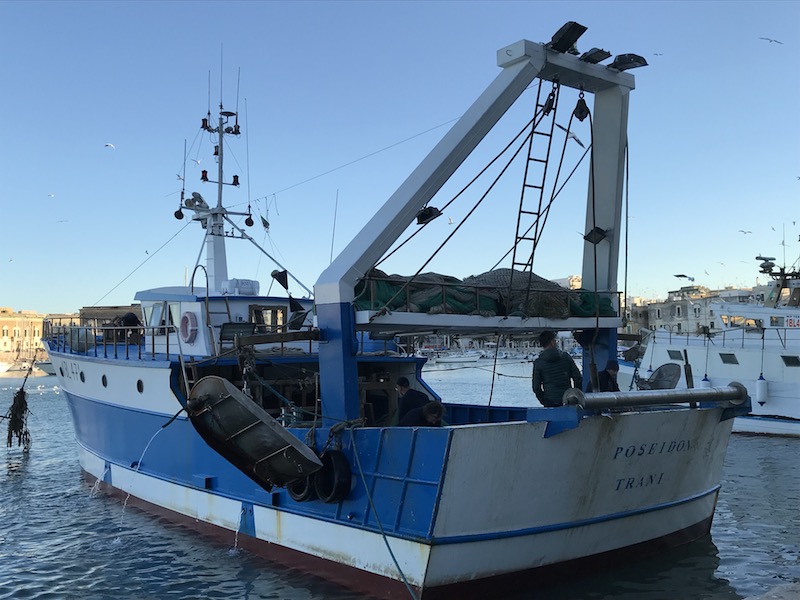

We took a few pictures of the port area and the water ... the clear blue Adriatic Sea.



Palazzo Valenzano was built in 1762 by Andrea Valenzano. The architecture here is interesting, as there is a strong contrast between the smooth upper level and the chiseled stone lower level.

One of the main sights is the Trani Cathedral, dedicated to Saint Nicholas the Pilgrim. It was built in the 11th and 12th centuries from local limestone which has a characteristic pale pink almost white color. It is Romanesque in style along with Moorish influences in the main doorway (the last picture tries to show these influences, including the elephants). You can also see the large square bell tower, which didn't seem to be open the couple times we stopped by.



The original brass doors, created by the sculptor Barisano da Trani in 1180, are inside. I assume that the bronze doors on the outside are copies, and I grabbed a few pictures of the details.




In a couple of churches, we have seen these really old frescoes on the walls.

Inside, the design is similar to others that we have seen ... two aisles created by tall columns going up to a very tall, wooden ceiling.


We headed down to the crypt , which holds the relics of Saint Nicholas the Pilgrim.


We walked over to the other side of the port and got an interesting view of the top of the cathedral and bell tower as the sun was starting to set.

The other main site is the castle, called Castello Svevo, that was built by Frederick II in the early 13th century. Sitting right on the water, it was a perfect place to defend the city from. The original castle had square base towers on each corner and a central courtyard. It was later modified in the 16th century by Charles V, who reinforced the defensive structure by adding two bastions equipped with fire arms. We weren't able to go inside as it was closed due to maintenance work.

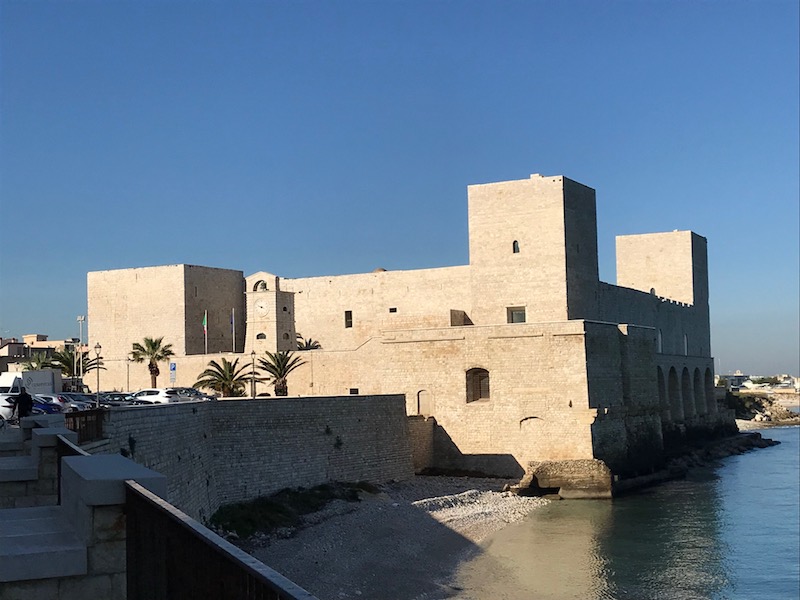
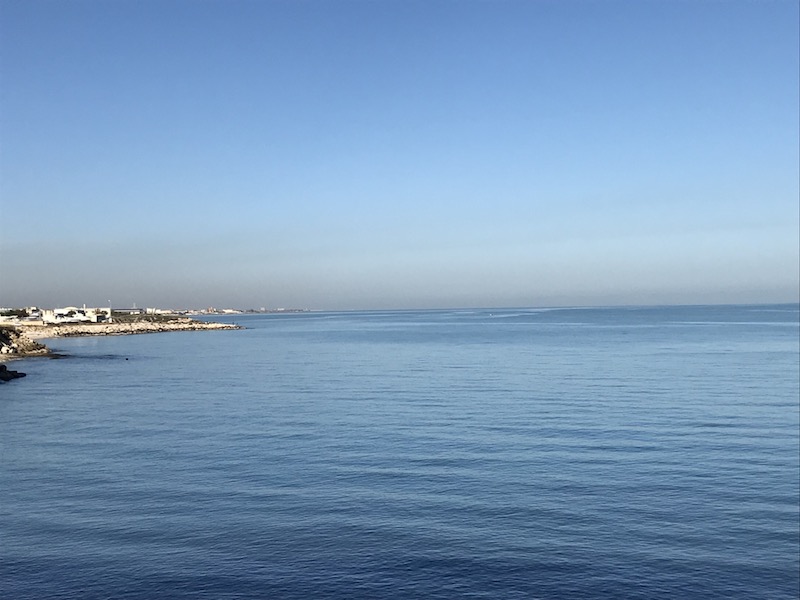




The Scolanova Synagogue was built in the 13th century. There was a large Jewish presence in the area starting in the 9th century, and 4 different synagogues were built in Trani. Frederick II gave the Jewish population in Trani the monopoly on the manufacture and sale of raw silk and, therefore, it was a good place to live and work. By 1380, all 4 synagogues had been converted to churches and most Jews had either been killed or left the town. All of them that remained were forcibly converted to Christianity. It ended up standing empty starting in the 1950's and in 2006, it was returned to the Jewish community.

The only other synagogue still remaining is Scolagrande Synagogue, although it is not a synagogue today. In 1380, it was converted to the Church of Sant'Anna and you can still see that name on one side. Today, it is a part of a museum.


This little tiny church is the 12th century Church of Saint Nicolino, or Saint Nicholas the Pilgrim.

A few pictures of the port ...


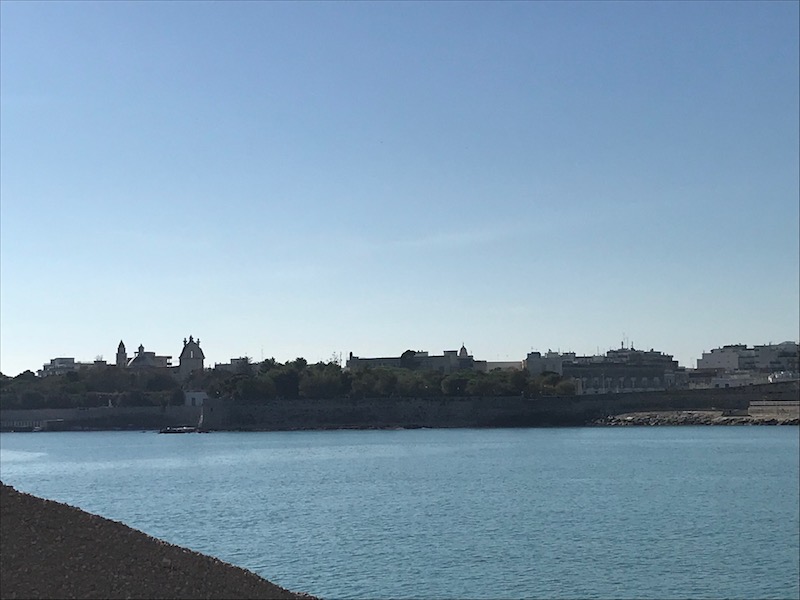
The Church of Saint Francis, also from the 12th century, was originally part of the a Benedictine Abbey. The name was changed in the 16th century, and it is one of the few 3-dome churches in this area of Italy. The inside has been heavily renovated, but you can still see an ancient baptismal font and part of an old fresco.




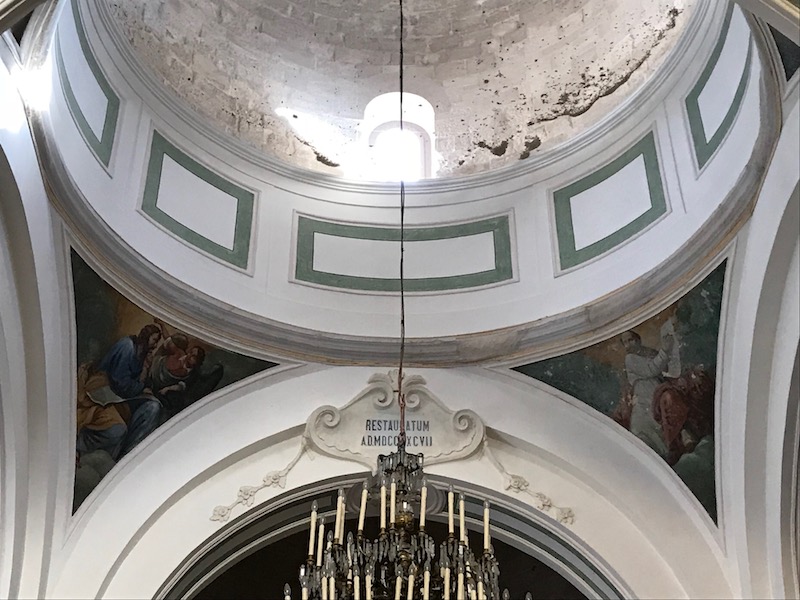


We decided to try this restaurant, called Pesto Pistacchio, although it was a vegan restaurant (it got great reviews). I can see why, the food was excellent. We started with Hummus and roasted peppers, along with a croquette made of pasta. For the pasta, we had a Pasta with black garlic and habanero drops (really hot!!) along with a ravioli with pistachio pesto filled with something that she explained was like asparagus that grows in the sea sand.



